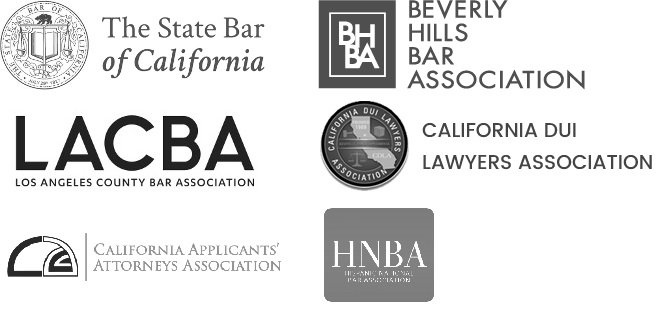Types of Workers’ Comp Benefits
Learn About Workers’ Comp Benefits in California
Injured at work? Claim denied or delayed?
If you get hurt at work in California, workers’ compensation benefits help cover your medical bills and replace lost wages while you recover. California offers several types of benefits, including temporary disability payments, permanent disability compensation, full medical care, and additional support services like job retraining. Understanding these benefits can make a big difference in your recovery and financial stability.
The workers’ compensation system in California protects employees who suffer work-related injuries or illnesses. Whether you have a minor injury that heals quickly or a serious condition that affects you long-term, different types of benefits apply to different situations.
This guide explains each type of benefit available through California’s workers’ compensation system. You’ll learn about temporary and permanent disability payments, medical care coverage, and supplemental support that can help you get back on your feet after a workplace injury.
If you were injured at work in California, you may be eligible for benefits. Contact LG Law Center today for a free case review!
Overview of Workers’ Compensation Benefits in California
California’s workers’ compensation system protects employees who get hurt or sick because of their job. The law requires most employers to provide medical care and wage replacement benefits for work-related injuries and illnesses.
Purpose of Workers’ Compensation
Workers’ compensation serves as a safety net for California employees. The system makes sure workers get medical treatment and financial support when they suffer job-related injuries or illnesses.
Key benefits include:
- Medical care to treat work injuries
- Money to replace lost wages
- Payment for permanent disabilities
- Job retraining assistance
The law requires employers to carry workers’ compensation insurance. This insurance pays for employee benefits when workplace accidents happen. If employers don’t have coverage, the state can shut down their business operations.
Workers give up their right to sue their employer in exchange for these guaranteed benefits. This trade-off helps both sides avoid lengthy court battles.
Who Is Eligible for Benefits
Most California workers can receive workers’ compensation benefits. The law covers both full-time and part-time employees.
Covered workers include:
- Regular employees
- Temporary workers
- Seasonal employees
- Undocumented workers
Independent contractors usually don’t qualify for benefits. Some executive officers and business partners may also be excluded.
Workers don’t need to prove their employer was at fault. They just need to show the injury happened because of their job. Even workers who made mistakes can still get benefits.
The injury must occur during work hours or while doing job-related tasks. Workers who get hurt during lunch breaks or company events may also qualify.
Types of Work Injuries Covered
California workers’ compensation covers injuries and illnesses that arise from employment. The injury must happen “out of and in the course of business.”
Common covered injuries include:
- Slip and fall accidents
- Equipment injuries
- Repetitive motion injuries
- Back and neck injuries
- Burns and cuts
Work-related illnesses also qualify for benefits. These include breathing problems from chemical exposure or hearing loss from loud noise.
Coverage requirements:
- The injury must be work-related
- It must happen during normal work activities
- Pre-existing conditions can qualify if work makes them worse
Some injuries may not be covered. These include self-inflicted injuries or injuries from fighting at work. Drug or alcohol use during the injury may also affect coverage.
Temporary Disability Benefits
Temporary disability benefits replace part of your wages when you can’t work or have limited work ability due to a job injury. These payments continue while you recover and can work again at your normal capacity.
Definition and Coverage
Temporary disability benefits substitute for lost wages when a work injury prevents normal job duties. The insurance company must agree the injury happened at work.
Two main types exist:
- Temporary Total Disability (TTD) – You cannot work at all while recovering
- Temporary Partial Disability (TPD) – You can do some work but earn less than before
TTD applies when doctors say you cannot perform any work tasks. You receive these payments until you can return to some type of work.
TPD kicks in when you can work limited hours or do lighter duties. Your employer must offer this modified work. If your new wages fall below the legal maximum limit, you get TPD payments.
The injury must fall under California workers’ compensation law. You need approval from a workers’ compensation doctor to qualify for benefits.
Calculation of Payments
TTD payments equal two-thirds of your average weekly wages before the injury. The state sets minimum and maximum payment amounts each year.
Payment calculation steps:
- Add up wages from the 12 months before injury
- Divide by 52 weeks to get average weekly wage
- Multiply by 0.667 (two-thirds)
- Apply state minimum and maximum limits
TPD payments equal two-thirds of your wage loss. This means the difference between old wages and new reduced wages.
Some employers have salary continuation plans. These plans may pay your full wages for part of the disability period. When salary continuation ends, regular temporary disability payments begin.
Duration of Temporary Benefits
Temporary disability benefits last up to 104 weeks within five years of the injury date. This gives you two years of payments spread over five years maximum.
Benefits continue while you need medical treatment and cannot work normally. The 104-week limit applies to most injuries.
Time limits may extend for:
- Severe burns
- Certain chronic conditions
- Injuries requiring multiple surgeries
Some injuries heal faster and require fewer than 104 weeks of benefits. Others may reach the maximum time limit before full recovery occurs.
When Temporary Disability Ends
Temporary disability stops when specific events happen. The most common reason is medical clearance to return to regular work.
Benefits end when:
- Doctor releases you to full work duties
- You reach maximum medical improvement
- The 104-week limit expires
- You refuse suitable work offered by employer
Maximum medical improvement means your condition will not get better with more treatment. At this point, doctors evaluate if you have permanent disabilities.
If you refuse reasonable work within your medical restrictions, benefits may stop. The work must match your doctor’s limitations and pay fairly.
Permanent Disability Benefits
Permanent disability benefits provide ongoing financial support when work injuries cause lasting impairments that affect earning capacity. The disability rating determines benefit amounts, while the type of disability affects payment duration and medical coverage.
How Permanent Disability Is Determined
California uses a complex rating system to determine permanent disability levels. A doctor evaluates the injury and assigns a disability rating based on medical findings.
The rating considers several factors:
- Medical impairment – How the injury affects body function
- Age – Older workers receive higher ratings
- Occupation – Job demands influence the rating
- Diminished earning capacity – Expected impact on future wages
Ratings range from 1% to 100%. Each percentage point equals a specific dollar amount set by state law.
A qualified medical evaluator or agreed medical evaluator performs the assessment. They use the AMA Guides to the Evaluation of Permanent Impairment to create standardized ratings.
Partial vs. Total Permanent Disability
Partial permanent disability affects workers with ratings between 1% and 99%. These workers can still perform some type of work despite their limitations.
Benefits include:
- Bi-weekly disability payments
- Ongoing medical care for the injury
- Supplemental job displacement voucher (if applicable)
Total permanent disability applies to 100% ratings or specific severe injuries. Workers cannot return to any gainful employment.
Total disability provides:
- Weekly payments for life
- Full medical coverage for the work injury
- Higher benefit amounts than partial disability
Certain injuries automatically qualify as total permanent disability. These include loss of both eyes, both hands, or both feet.
How Compensation Is Calculated
Permanent disability payments depend on the disability rating and average weekly wages before injury. California uses a predetermined schedule to calculate benefits.
The formula includes:
- Disability percentage – Higher ratings mean more money
- Pre-injury wages – Based on earnings in the year before injury
- Date of injury – Benefit rates change yearly
Payment duration varies by disability level. Lower ratings receive fewer total payments. Higher ratings continue for longer periods.
For example, a 10% disability rating might pay for 30 weeks. A 50% rating could continue for several years.
Workers with ratings of 70% or higher may qualify for life pension payments. These continue until death, providing long-term financial security.
Medical Care Benefits
California workers’ compensation provides complete medical coverage for work-related injuries without any cost to the injured worker. The law requires employers to pay for all reasonable medical treatment needed to cure or relieve the effects of workplace injuries.
Covered Medical Treatments
Workers’ compensation medical benefits cover a wide range of treatments needed for work-related injuries. The law requires coverage for any medical care that is “reasonably required to cure or relieve” the effects of the injury.
Covered medical expenses include:
- Doctor visits and consultations
- Hospital stays and emergency room visits
- Surgery and medical procedures
- Prescription medications
- Physical therapy and rehabilitation
- Medical equipment like crutches or braces
- Diagnostic tests such as X-rays and MRIs
The treatment must follow scientifically based medical guidelines. Workers do not pay deductibles, copayments, or any other costs for approved medical care.
All medical treatment must be related to the workplace injury. The workers’ compensation insurance company reviews treatment requests to make sure they are necessary and reasonable.
Choosing a Treating Doctor
California has specific rules about which doctor can treat a work-related injury. The choice depends on whether the employer has a Medical Provider Network and if the worker received emergency care.
For non-emergency injuries:
- Workers must treat with doctors in their employer’s Medical Provider Network if one exists
- If no network exists, workers can choose any doctor who accepts workers’ compensation cases
- The chosen doctor becomes the “primary treating physician”
For emergency injuries:
- Workers can go to any emergency room or urgent care facility
- After emergency treatment, they must follow the regular doctor selection rules
- Emergency care is always covered regardless of the provider
The primary treating physician manages the worker’s medical care. This doctor can refer patients to specialists when needed. Workers have the right to change doctors within the network under certain circumstances.
Medical Provider Networks
Many employers in California use Medical Provider Networks (MPNs) to manage workers’ compensation medical care. These networks are groups of approved doctors and medical facilities that treat injured workers.
Key features of MPNs:
- Workers must receive treatment from network providers
- Networks must have enough doctors in different specialties
- Each network covers a specific geographic area
- Networks must provide translation services when needed
Workers have some rights within MPNs. They can request a second opinion from another network doctor. If they are unhappy with their assigned doctor, they may request a change to a different network provider.
MPN requirements include:
- At least three primary care doctors per specialty
- Adequate geographic coverage for workers
- Female workers can access female doctors when available
- Access to specialists within reasonable travel distances
Workers who believe their MPN is not providing adequate care can file complaints with the state. The Division of Workers’ Compensation monitors these networks to ensure they meet legal requirements.
Supplemental Benefits and Additional Support
California workers’ compensation offers extra support beyond basic medical care and disability payments. These benefits help workers transition back to employment and provide financial protection for families when workplace injuries result in death.
Supplemental Job Displacement Benefits
Workers who cannot return to their old jobs due to permanent disabilities may qualify for supplemental job displacement benefits. These benefits apply only to injuries that occurred on or after January 1, 2004.
The benefit comes as a non-transferable voucher worth up to $6,000. Workers can only use this voucher for specific education and training purposes.
Eligible uses include:
- Vocational retraining programs
- Skills enhancement courses
- Education at approved schools
- Job placement services
- Resume and interview preparation
To qualify, three conditions must be met. The worker must have a permanent disability from their injury. Their employer must not offer regular, modified, or alternative work. The injury must have happened after January 1, 2004.
The voucher cannot be transferred to another person. It also cannot be exchanged for cash payments.
Death Benefits for Families
When a worker dies from a job-related injury or illness, their dependents receive death benefits. These payments help support surviving family members financially.
Eligible recipients include:
- Surviving spouse
- Children under 18 (or under 23 if full-time students)
- Other dependents who relied on the worker’s income
Death benefits are paid in regular installments rather than a single lump sum. The payment amounts depend on the number of dependents and their relationship to the deceased worker.
A surviving spouse typically receives benefits for life or until remarriage. Children receive payments until they reach age 18, or age 23 if they attend school full-time.
The benefits also cover reasonable burial expenses up to a specific limit set by state law.
Return-to-Work Programs
The Return to Work Supplement Program (RTWSP) encourages injured workers to get back to employment quickly. This program provides extra financial incentives for workers who return to work while still recovering.
Workers may receive supplement payments when they return to modified or light-duty work. These payments help make up for lost wages when workers cannot perform their regular job duties.
The program works with employers to create suitable work arrangements. This might include shorter hours, different tasks, or workplace modifications.
Participation in return-to-work programs can speed up recovery. It also helps workers maintain their connection to the workplace during healing.
Injured At Work? Contact LG Law Center Today!
Workers who get hurt on the job need help right away. The California workers’ compensation system can be hard to understand. Many injured workers don’t know what benefits they can get.
LG Law Center helps injured workers in Ontario, California. Attorney Luis E. Gonzalez knows workers’ compensation law well. He helps workers get the benefits they deserve.
Workers should contact LG Law Center if they:
- Got hurt at work
- Need medical care for work injuries
- Can’t work because of their injury
- Have questions about workers’ comp benefits
Getting help early matters. Workers need to report injuries quickly and file claims the right way. Mistakes can hurt their chances of getting benefits.
Some employers or insurance companies try to deny claims. They might say the injury didn’t happen at work. Others might offer less money than workers deserve.
LG Law Center fights for injured workers. The firm knows how to handle difficult cases. They help workers get medical care, wage replacement, and other benefits.
Workers don’t have to face this alone. LG Law Center offers free consultations to injured workers. They can explain what benefits are available and help with the claim process.
Contact LG Law Center today if you got hurt at work. Don’t wait – your rights and benefits are important. The firm is ready to help you get the workers’ compensation benefits you need.


Workers’ Compensation Attorney in Ontario, California
If you’ve been injured on the job in Ontario, California, you may be entitled to workers’ compensation benefits to help cover your medical care and lost wages. While the system is designed to protect workers, filing a successful claim can quickly become complicated, especially when insurance companies work hard to minimize payouts. From delayed treatments to denied benefits, many injured workers find themselves struggling to get the support they need.
LG Law Center is committed to protecting the rights of injured employees throughout Ontario and Pomona. Their experienced workers’ compensation attorneys know how to stand up to insurance companies and fight for the full benefits you deserve. Contact them today for a free consultation and let them help you take the next step toward recovery.







